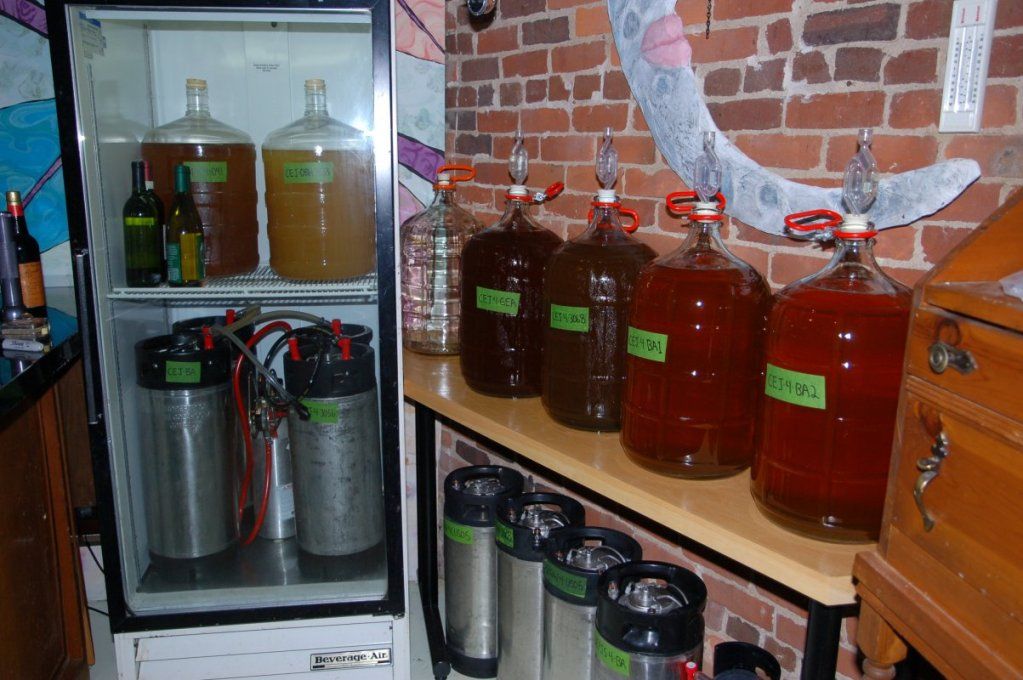I picked up the first juice of the 2012 Season today. Its a mix of Cortland, Grimes Golden, Empire, Gala, Rambo and Jonathan. Its a similar mix to the first pressing of last season. The mouthfeel is not quite as good as what I remembered from last year, but it has the same great aroma, flavor and finish. Sg was 1.054. Unpasteurized, no kmeta, pitched with the following tried and true combos:
(2) Brupaks yeast with half pound of corn sugar and a pound of light turbinado per 6 gallon carboy, to bump the OG to about 1.064
(1) Brupaks yeast with no sugar
(1) Gervins English Ale yeast (AKA Notty) with half pound of corn sugar and a pound of light turbinado
(1) WLP041 with half pound of corn sugar and a pound of light turbinado
(1) Wy3056 with half pound of corn sugar and a pound of light turbinado
(1) Wy3068 with half pound of corn sugar and a pound of light turbinado
(1) Wy3333 with 2.5 lbs of Orange blossom honey
Usually I add sugar to all my first pressing batches because it makes them easier to crash consistently, and stay crashed at room temp if SG is around 1.065. Now that I have a larger fridge, I did one batch of Brupaks with no sugar. I plan to just crash that one and keep it on tap so I dont have to worry about whether it stays stable at room temp.
The Wheat yeasts and WLP041 get blowoff tubes, with carboys filled to 5.5 gal
The ale yeasts use a regular bubbler with carboys filled to 5.75 gal.
One of the handy thing about using better bottles for primaries, is that if you add sugar or honey (which I usually do for early season apples), you can just pour the sugar or honey straight into the carboy, use a #10 gum stopper, and roll them all together on the floor for about 10 min to get however many carboys you have thoroughly dissolved and mixed without a lot of effort

























![Craft A Brew - Safale S-04 Dry Yeast - Fermentis - English Ale Dry Yeast - For English and American Ales and Hard Apple Ciders - Ingredients for Home Brewing - Beer Making Supplies - [1 Pack]](https://m.media-amazon.com/images/I/41fVGNh6JfL._SL500_.jpg)




































